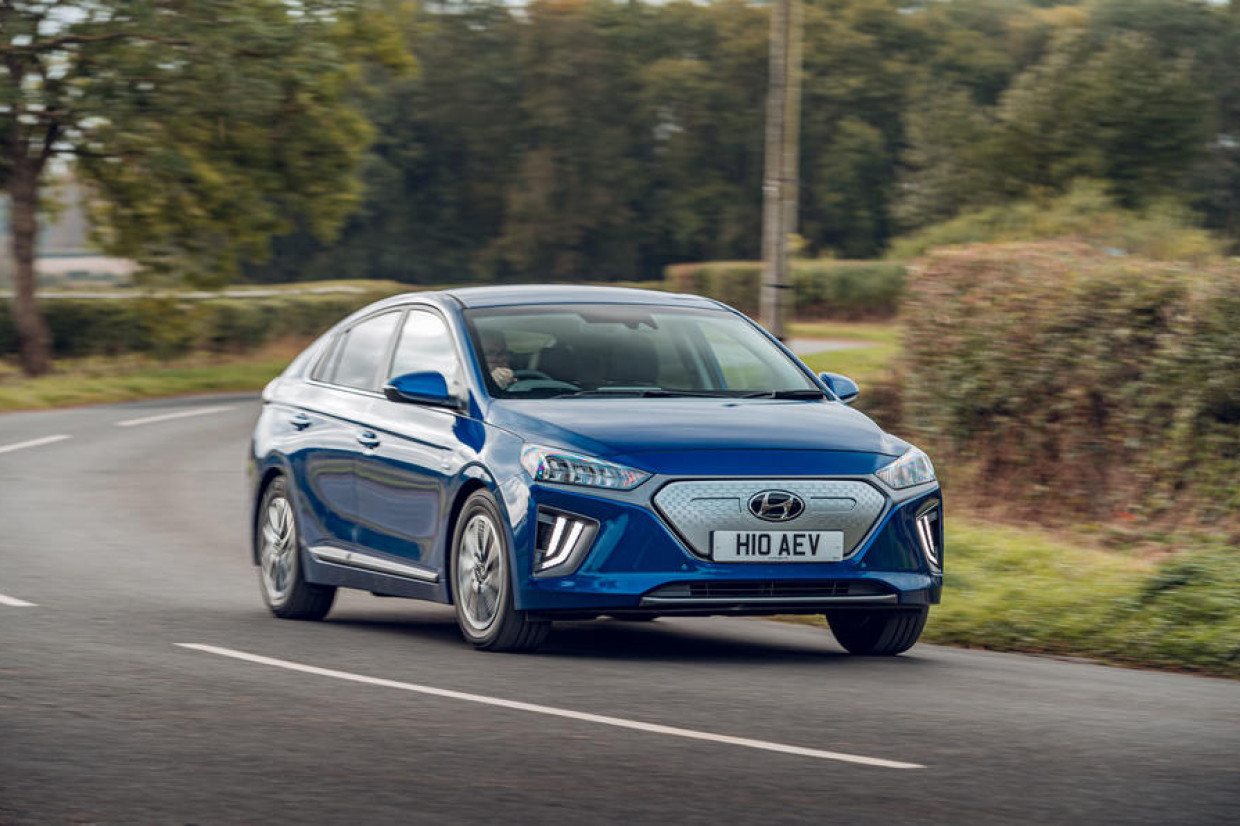
Move Electric verdict: three and a half stars out of five
Sell it to me in a sentence….
Bucking the SUV trend, the Hyundai Ioniq Electric is a compact family hatchback that aims to deliver EV motoring at a more affordable price; plus it’s packed with kit and backed by an excellent warranty.
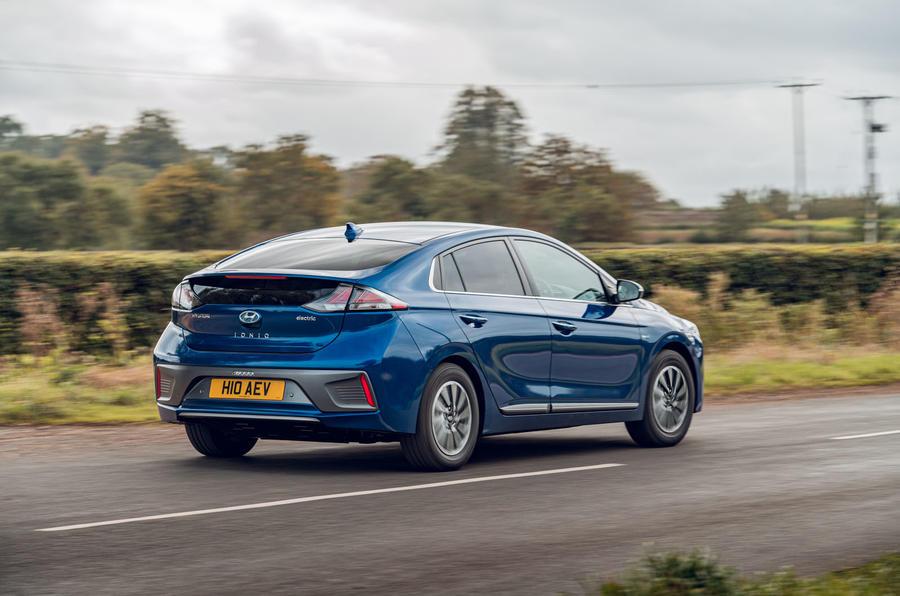
Hold on, haven’t I heard the Ioniq name before?
You probably have, because Hyundai seems quite fond of the name. For starters, the Ioniq Electric is part of an identical-looking three car line-up, with more affordable petrol-electric Hybrid and PHEV (Plug-in Hybrid Electric Vehicle) versions also available.
Yet it’s also using the name for its new range of upmarket EVs, such as the boldly styled Ioniq 5. Bigger, more luxurious and with cutting edge tech, this more expensive model looks and feels like it comes from a completely different brand. Either way, you can expect to hear more of the Ioniq name in the future.
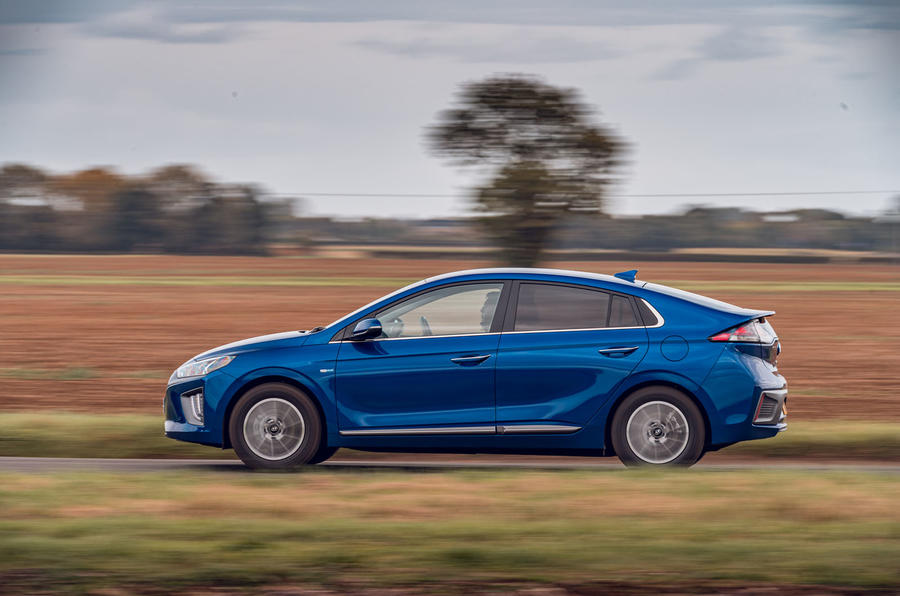
Okay, tell me more. What are the highlights?
To be honest, the Ioniq Electric isn’t the sort of car you’re going to get terribly excited about. It’s a bit too sensible for that, with the emphasis very much on delivering value for money rather than heart-pumping desirabilty.
Still, we think it’s a fairly handsome thing, in a sleek and understated sort of way. It certainly makes a change from the usual SUV and crossover models that are its natural rivals for your cash. It’s well equipped too, with all versions getting premium car features such as climate control and keyless entry as well as heating for the seats and steering wheel. Then there’s adaptive cruise control, which automatically keeps a safe distance to the car in front, accelerating and braking as needed.
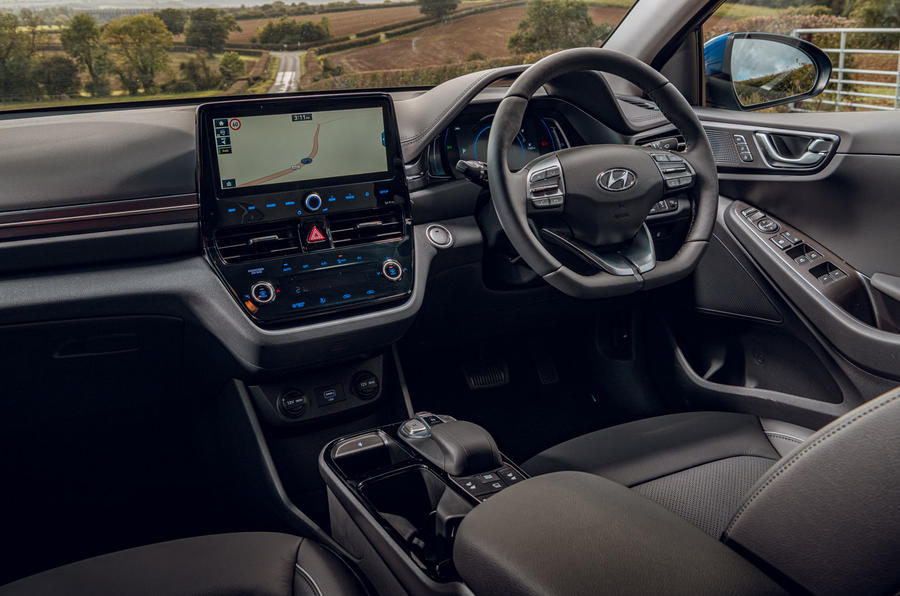
Also included is an eight-inch touchscreen infotainment screen that’s handily mounted on top of the dashboard. It’s not as hi-tech looking as some, but it’s intuitive to use and has all the features you’ll need, including Apple Carplay and Android Auto.
Perhaps the biggest selling point of the Ioniq is how easy it is to get along with. Even by EV standards the Hyundai is a doddle to drive, with light steering and simple controls. To get going you just hit the starter button, engage drive on the gearbox and press the accelerator - it’s as straightforward as that. It’s not a great deal of fun to drive, but the handling is safe and predictable, while the suspension does a good job of ironing out bumps in the road, even if it is noisier than most while it’s doing it.
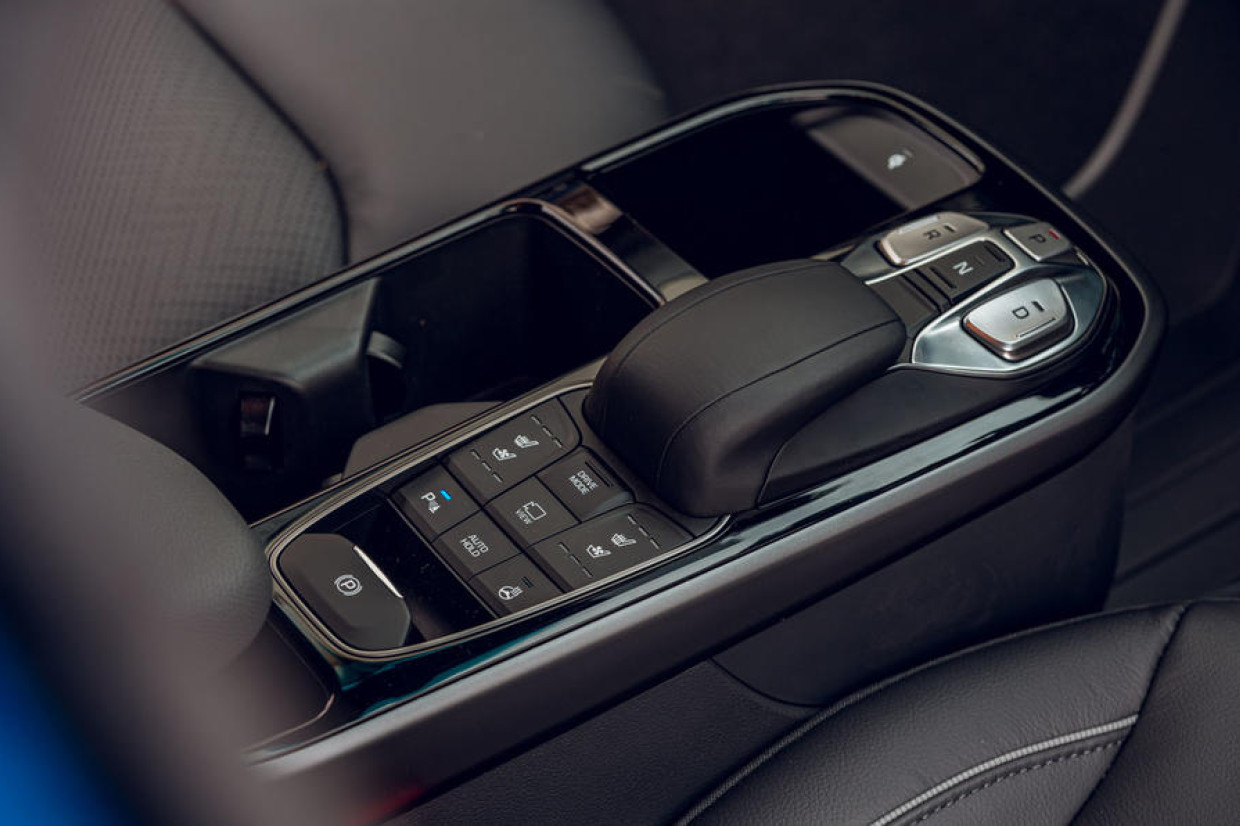
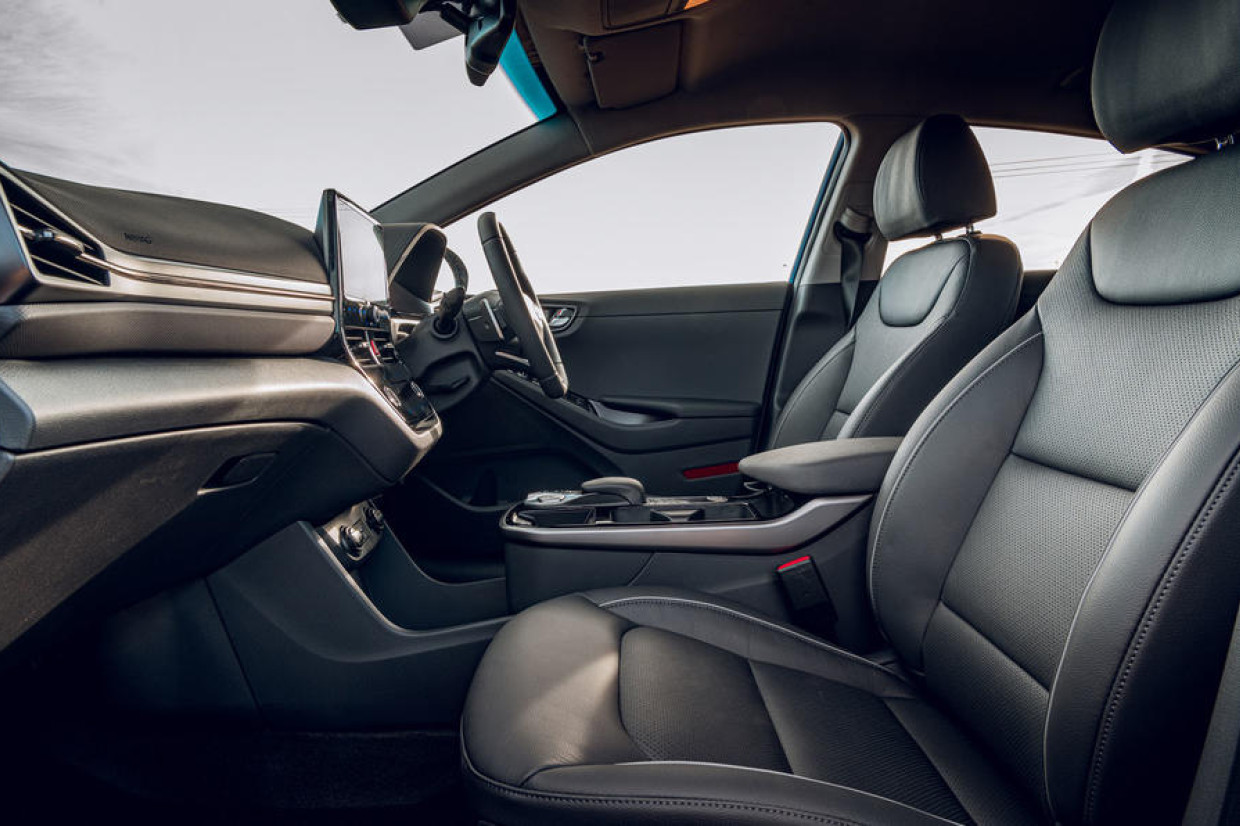
If you’ve not driven an EV before, then the regenerative braking function might take a little getting used to at first. Essentially, this setup slows the car significantly as you lift off the accelerator as the car’s drive motor is turned into a generator to feel electricity back into the battery. Happily, you can easily alter the force of the braking effect by pulling on paddles mounted on the steering wheel - on many rivals you have to enter sub menus on the infotainment system. In its most aggressive setting it’s possible to bring the Ioniq to a quick stop without even touching the brakes.
Right, give me some facts and stats
The Ioniq was one of the earliest mainstream EV models to make its debut, and as a result it can’t match the latest crop when it comes to battery and performance Top Trumps. For starters, it’s 38.3kWh lithium ion battery looks fairly weedy compared to rivals that boast twice the energy - in fact these days you’ll find the odd plug-in hybrid with similarly sized cells.
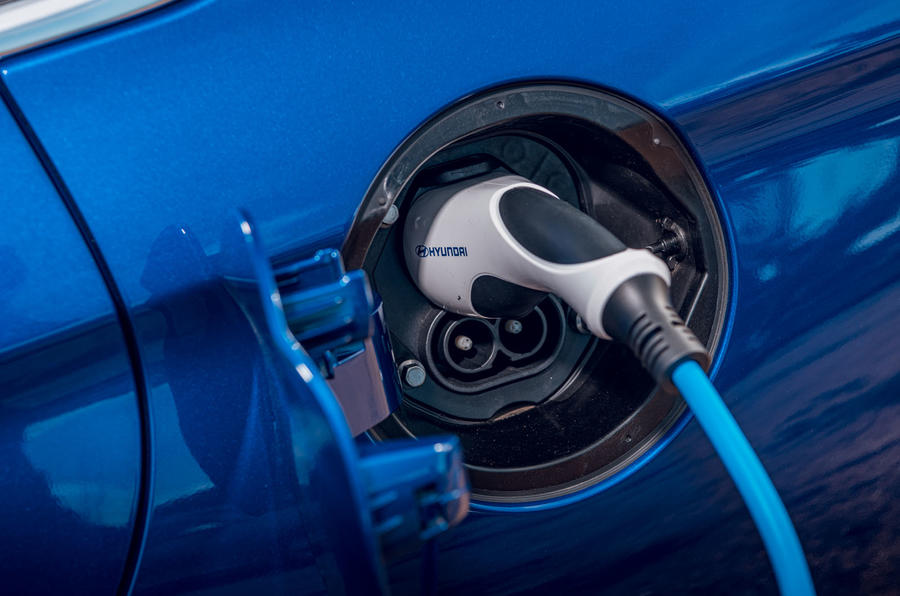
However, thanks to its slippery aerodynamic shape and relatively low weight, the Ioniq claims a respectable 193 miles for a full charge. In real world conditions you can expect closer to 140 miles, which for local hops and commuting should be more than enough. Longer journeys on the other hand could be nail-biters.
Equally frustrating on long haul trips is the Hyundai’s limited quick charging ability. With such a small battery, the Ioniq’s flow of rapid DC CCS supplied electricity is capped at 50kW. This means you’ll need the best part of a thumb-twiddling hour to get the battery back to 80 percent capacity. On the flipside, the small battery pays dividends at home, where just six and a half hours is required on a 7kW domestic wallbox to get a full charge.
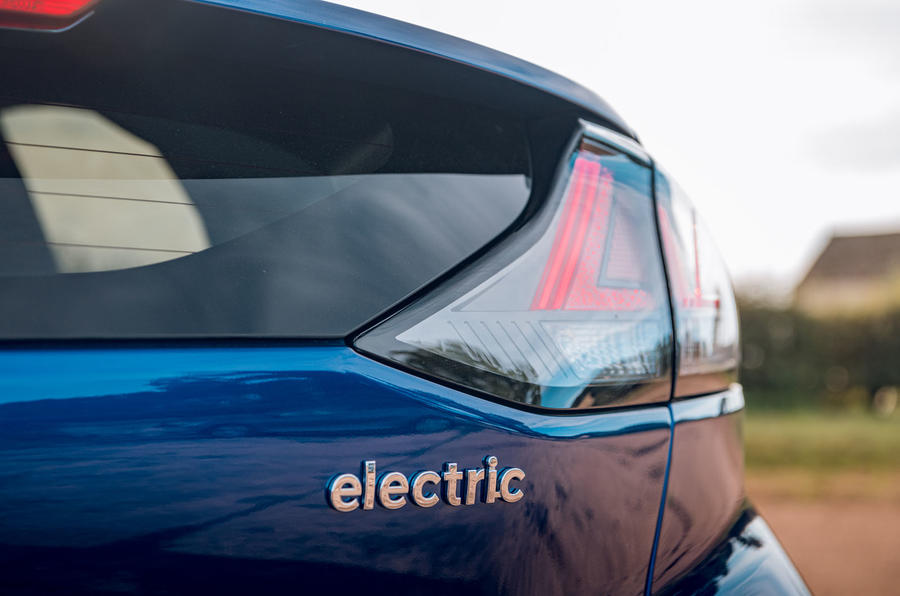
Just as speedy is the Hyundai’s acceleration, which is fast enough to give the odd hot hatchback owner a fright. It’s 134bhp motor isn’t particularly powerful, but it can deliver all its performance instantly, allowing it to zip off the line with real energy. Away from the traffic lights you can usually hit 30mph while other drivers are still fumbling for first gear.
Officially the Ioniq will crack the 0-62mph sprint in 10.2 seconds, but hitting the Sport button liberates a few extra electric horsepower and drops this figure to 9.9 seconds. And like many smaller EVs, the Hyundai’s acceleration slows noticeably as you get close to the national speed limit, meaning it feels at its most brisk around town.
Talking of numbers, it’s one of the few family-sized EVs that still qualifies for the Government’s reduced £1,500 plug-in grant, which means an entry-level version will set you back £30,550. For context, the much smaller Peugeot 208 Electric with a similar range and amount of equipment is only around £1,000 less.
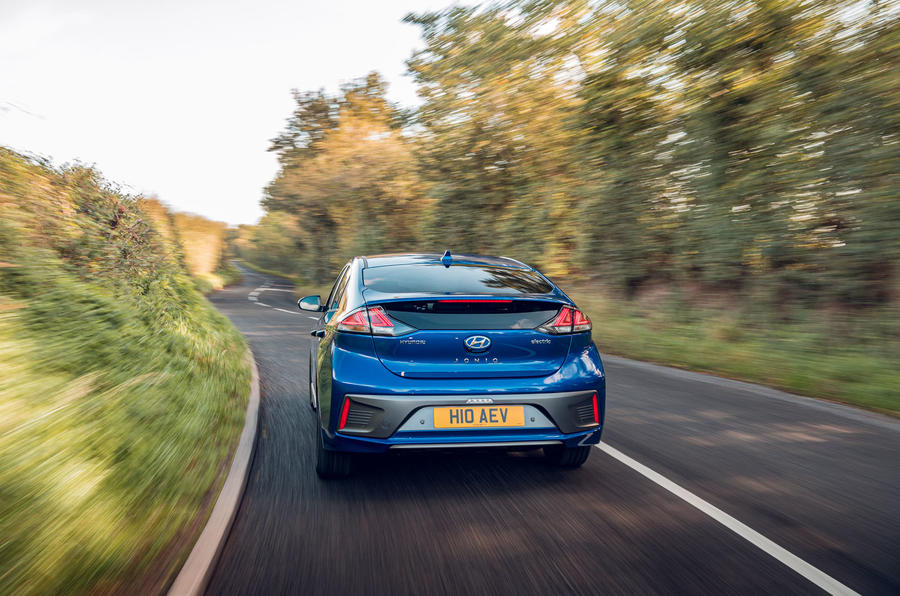
You said it was sensible. Does that mean practical?
In a sea of ever-increasing SUV rivals, you’d have thought the compact-looking Ioniq would be a cramped choice. Yet despite it’s rakish looks the Ioniq is actually a surprisingly spacious choice and one that does a decent job of being a family holdall.
The tallest rear seat passengers might find that their heads brush the roof, but there’s a decent amount of legroom in the back and handy storage, with door bins and cup holders. Those sitting up front have even more room, while the deep cubby between the front seats will swallow most of the odds and ends that families accumulate when on the move. There’s also a wireless charging phone charging pad and numerous USB sockets, which will help keep devices topped-up on the move.
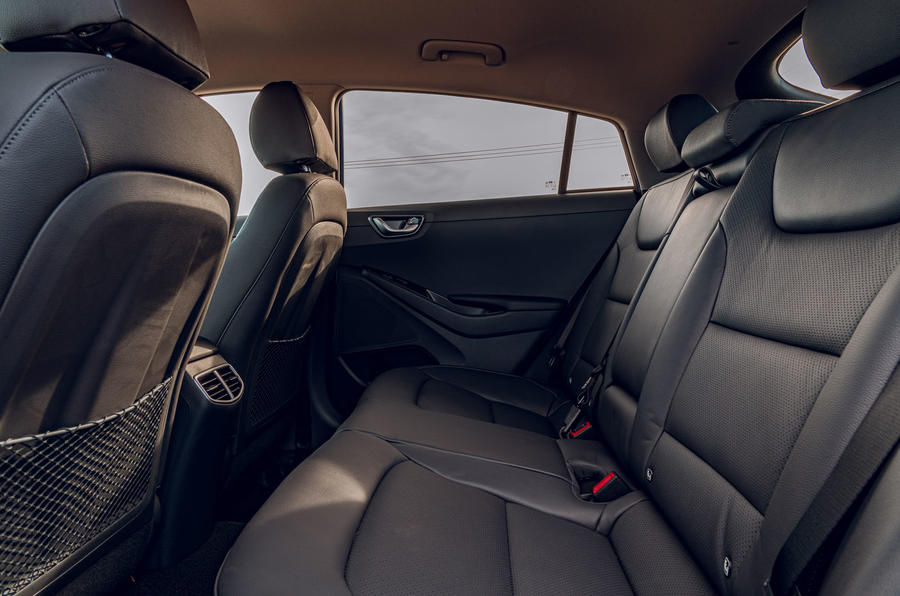
Having its battery shoved underneath the floor means the Ioniq Electric’s boot isn't as big as the hybrid models’, but at 357-litres it's handily-sized, with more than enough space for a week away or the biggest weekly shop you can manage. There’s a 60/40 split fold rear seat too, which lowers to liberate a useful 1417-litres of capacity. And the hatchback tailgate opens wide and has a usefully low loading lip too.
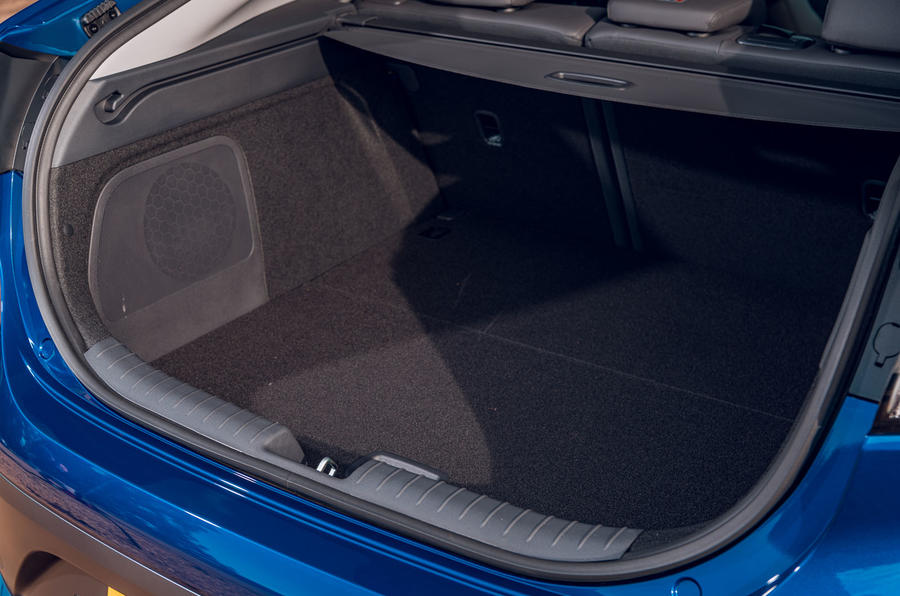
And what about that warranty?
Ah yes, of course. One of the major selling points of the Ioniq is that, like all Hyundai models, it's covered by a five-year warranty. That’s not as impressive as it once was (Renault and Toyota now offer similar cover, while Kia gives you a seven-year guarantee), but unlike most of them there is no mileage limit.
Still not feeling the peace of mind? Well, the battery is covered by an eight year warranty, although this one is limited to 100,000 miles.
Okay, so what are the downsides?
Given its aim to deliver safe and sensible EV motoring at relatively affordable price it’s perhaps a little unfair to knock the Ioniq for not being terribly exciting, but the truth is that it’s not. It drives well enough, but it’s not a car that’ll have you plotting the long route home (unless it’s to visit a DC charger that is) or grabbing the keyless fob for a late night thrill ride.
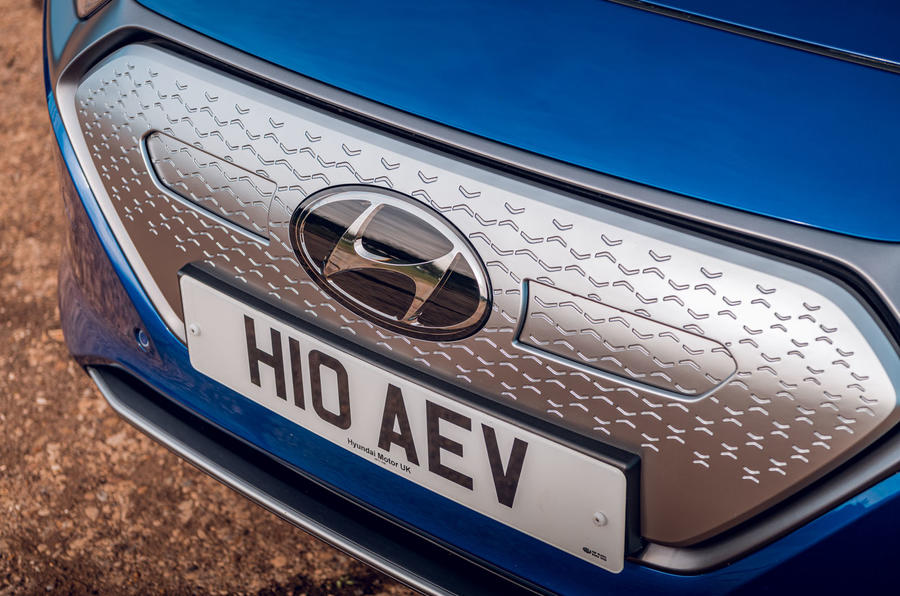
It also seems a little churlish to criticise the limited battery range, because if it fits in with your life then who cares? Yet in a world where rivals can crack 300 miles between charges, the Hyundai is literally being left behind. And as EV technology improves the car’s small battery and limited charging options are only going to become more frustrating.
Okay, I like the idea of the Ioniq, but what are my other options?
Well, if you want something similarly spacious and electric, then you’re likely to be looking at one of the many SUV models for now. Hyundai itself also offers the Kona, which is more stylish and packs the same battery and motor as the Ioniq, but delivers a smaller cabin for similar cash.
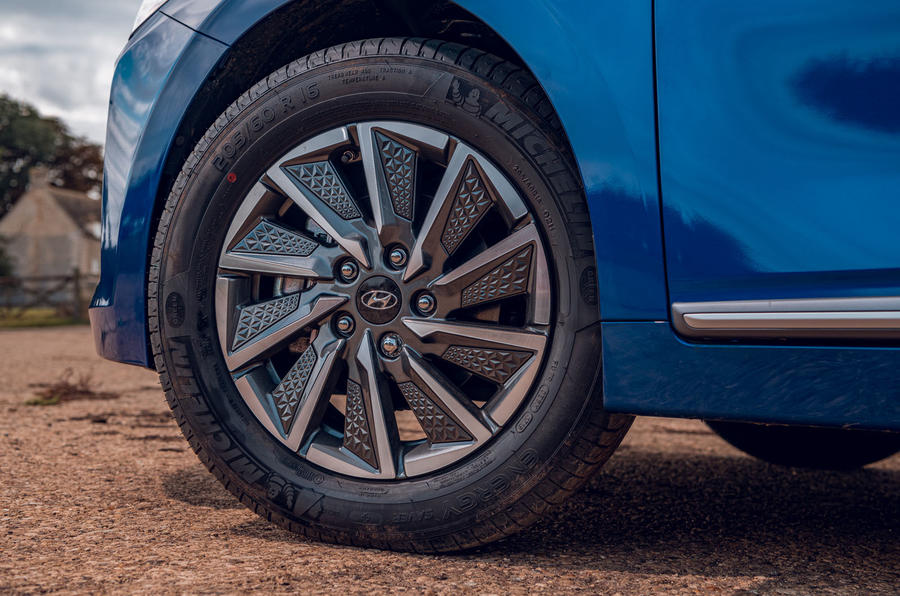
At sister firm Kia there’s the much more practical but pricier Niro, which like the Kona can also be specified with a larger 64kWh battery for a near 300 miles range. However, don’t expect to see change for £35,000 for these versions.
Downsized models with a touch more glamour but not as much practicality as the Hyundai include the Peugeot e-208 supermini and it’s more rugged SUV 2008 brother, plus there’s also the Renault Zoe that also boasts a healthy 292 mile range.
Verdict
It’s not a car that’ll get your pulse racing or turn your neighbours green with envy, but the Ioniq is a thoroughly sensible, well-equipped and great value family EV. Provided you can live with the range.
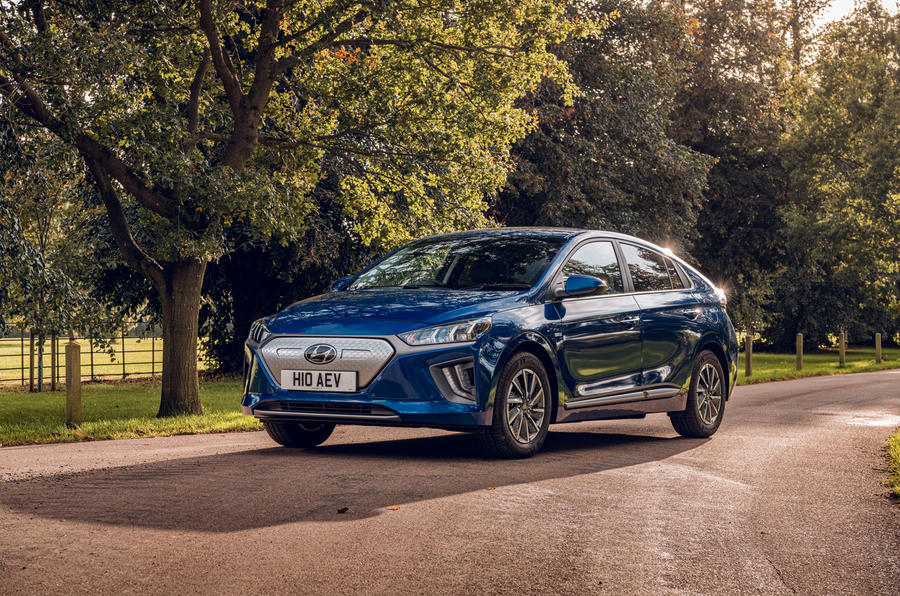
Hyundai Ioniq Electric specification
Price from: £30,550
Motors: Electric permanent magnet synchronous
Gearbox: Automatic
Driven wheels: two
Maximum power: 134bhp
Maximum speed: 103mph
0-62mph from 9.9-10.2secs
Electric range (official) 193 miles
CO2 emissions: 0g/km
Tyres from: 205/60 R 16
Kerb weight excluding driver: 1527-1575kg
Gross vehicle weight: 1970kg
Height: 1475mm
Length: 4470mm
Wheelbase: 2700mm
Width with mirrors folded: 1820mm
Maximum boot capacity: 357-1417 litres
Rivals
READ MORE
e-BIKES
e-MOTORBIKES
e-SCOOTERS

